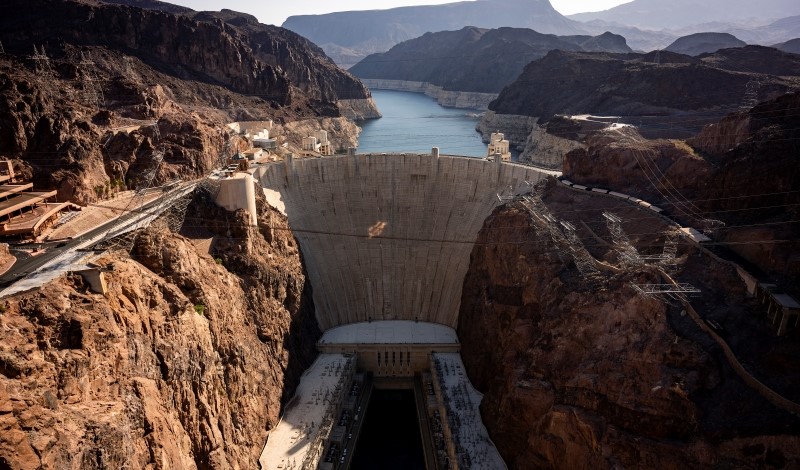
Scholars discuss the growing rate of dam removal in the United States.
The 20th century saw the construction of monumental federal dams—such as the Hoover, Grand Coulee, and Glen Canyon Dams—exponentially increasing hydropower production and providing water to much of the western United States. These large federal dams’ importance for power generation and water supply make it unlikely that most will be removed in the foreseeable future.
These dams are much more important than most in the United States. The U.S. Army Corps of Engineers National Inventory of Dams (NID) lists 92,392 dams of significant size, almost all far smaller and less hazardous than the major federal dams. Moreover, the NID does not account for more than 430,000 additional U.S. dams.
Private owners, state and local governments, and public utilities own and manage the overwhelming majority of U.S. dams. State governments regulate most dams, while the federal government oversees the approximately 3 percent of total NID dams used for hydropower, mining activities, and nuclear power.
As dams age, they pose increasing danger to the public and require costly maintenance and repairs. NID dams have an average age of 61 years and, by 2025, 73 percent will be over 50. At least 4,000 NID dams are in poor condition and could pose safety risks in the event of failure. Many NID dams, having outlasted suitability for their original purpose, neither provide a public service nor offer economic benefits. Smaller, non-NID dams are on average, older, in worse condition, and less economically valuable.
Removing aging dams can make downstream populations safer. Doing so often also offers net economic benefits to private or government owners by eliminating maintenance and repair costs and potential legal liability from dam failure. Governments of states with more aging dams—especially in New England, the Mid-Atlantic, and the Upper Midwest—tend to advocate for dam removal.
Dams harm ecosystems by changing riverine flows, leading to the harmful buildup of sediment and altering water temperatures. These disruptions cause species extinction in rivers and ocean deltas. Dams also block fish travel, threatening migratory species—most notably salmon, whose yearly “runs” upriver were once vital to ecosystems and local economies across California and the Pacific Northwest. In the 1990s, environmentalists and Native American communities negatively impacted by ecosystem disruptions forced the first significant dam removals. Since then, local and environmental impacts have offered key legal rationales for dam removal.
Increased awareness of the economic and environmental costs of dams has accelerated the rate of dam removal. Seventy-six percent of dams removed in the U.S. have fallen since 1999. Recently, excavators completed the largest ever U.S. dam removal project, restoring the Klamath River’s undammed flow for the first time in a century. Given the 800 million dollars allocated for dam removal by the Infrastructure Investment and Jobs Act (IIJA), experts suggest that the rate of dam removal will continue to grow.
In this week’s Saturday Seminar, scholars discuss the benefits and limitations of the current regulatory framework for dam removal and propose possible reforms.
- Although dam removal can have adverse ecological effects, note Michael C. Blumm of Lewis and Clark Law School and Dara Illowsky of Save the Sound in a recent article in the Oregon Law Review, long-term environmental benefits usually outweigh the costs. Removing dams, Blumm and Illowsky explain, can mobilize sediment which may contain toxins harmful to plants, animals, and humans. Blumm and Illowsky note, however, that these harms will likely be short-lived as flows finish redistributing sediment. Given the relatively brief harms and immense long-term ecological benefits of free-flowing rivers—such as the recovery of migratory fish species and improved water quality and temperature—Blumm and Illowsky argue that dam removal is strongly justified on environmental and ecological grounds.
- In a recent report, Adell Amos, Michelle Smith, and their coauthors from the University of Oregon School of Law Environmental and Natural Resources Law Center claim that the Federal Energy Regulatory Commission (FERC) should change how it considers the ongoing environmental impacts of hydroelectric dams during relicensing. Rather than considering the environmental effects of a dam’s continued operation against existing conditions, Amos and her coauthors suggest that FERC should use the undammed river as its baseline. Amos and her coauthors argue that, because an active FERC license is required for hydroelectric dams, this methodological change could help to remove the most environmentally harmful hydroelectric dams while aligning U.S. hydroelectric power generation with contemporary environmental standards.
- In an article in Frontiers in Water, Joshua Matanzima and Teboho Mosuoe-Tsietsi of the University of Queensland argue that a fuller understanding of a dam removal’s impact on local communities is essential to minimize its associated harms. Matanzima and Mosuoe-Tsietsi urge regulators to perform environmental and social assessments, such as more rigorous qualitative studies of the implications of dam removal “on the ground,” to understand better the related social and communal impacts of dam removal. Matanzima and Mosuoe-Tsietsi further suggest tracking the longitudinal effects of dam removal at five- to ten-year intervals and performing comparative analyses of impacts on local communities to ensure environmental justice in future removals.
- In a recent article in Water Alternatives, Coleen Fox of Dartmouth College and several coauthors urge continuing Tribal involvement in dam removals. Since the 1900s, the Fox team argues, the involvement of Native American Tribes has been integral to the success of many dam removals and water restoration projects. Fox and her coauthors explain that Tribal governments have historically emphasized a more holistic, intergenerational, and ecosystem-oriented view of dam removal than other stakeholders. Consequently, the authors argue, Tribes have played a key role in establishing more equitable removal processes. Moreover, Fox and her coauthors suggest that Tribal participation makes dam removal an act of restorative environmental justice, acknowledging past and present injustices to Native cultures and ecosystems.
- In an article in the Idaho Law Review, professor Michael C. Blumm of Lewis and Clark Law School argues that U.S. Representative Mike Simpson’s (R–Idaho) proposal to remove four dams on Lower Snake River in Idaho is fundamentally misguided. Blum suggests that the plan—which includes massive community development projects, industrial subsidies, and a 50-year moratorium on lawsuits against dam owners—is overly expensive. The resultant $33.5 billion price tag, Blumm explains, is not only politically and economically unfeasible, but also unnecessary. Instead, Blumm argues that dam removal is economically justifiable without enormous spending because the return of robust salmon runs on the post-removal Lower Snake would be enough, in time, to revitalize the local economy.
- In an article on the website of American Rivers, Katie Schmidt of the National Dam Removal Program suggests that to take full advantage of the transformational dam removal opportunity offered by the IIJA, stakeholders must work quickly to expend the remaining funding authorized by the Act. Federal agencies, Schmidt notes, have until 2026 to allocate IIJA funds to dam removal projects. Schmidt argues that ensuring every dollar is put toward dam removal requires close and sustained collaboration between federal agencies, dam removal practitioners, and environmental advocacy groups. Such collaboration is vital for present and future dam removal efforts, Schmidt explains, because full allocation of IIJA funds would demonstrate need and capacity for future federal dam removal funding.



